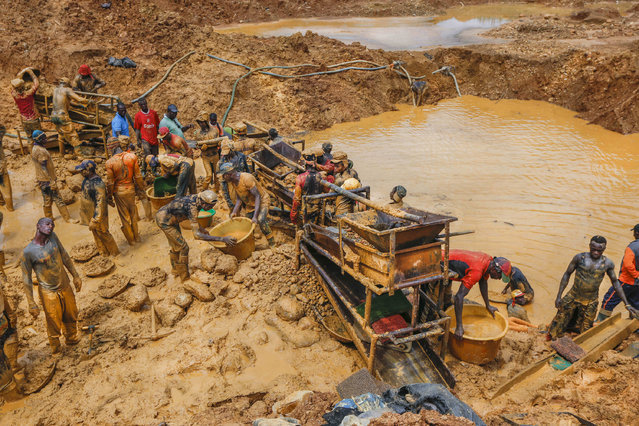
-
Ongoing illegal mining (“galamsey”) spotted in Simpa township, Western Region.
-
Dr Kenneth Ashigbey, CEO of Ghana Chamber of Mines, criticizes local MCE for lax enforcement.
-
Stan Dogbe, Deputy Chief of Staff, accuses Ashigbey of political bias and questions past efforts against galamsey.
-
Ashigbey defends his consistent anti-galamsey advocacy and insists his work is non-partisan.
-
Calls made for stronger government interventions and accountability for officials in mining areas.
-
Highlighted risk: political framing of environmental issues may hinder genuine efforts to curb illegal mining.
Tensions have escalated between the Ghana Chamber of Mines and a high-ranking government official over the handling of illegal mining in the Western Region. Dr Kenneth Ashigbey, the Chamber’s CEO, highlighted ongoing galamsey activities in Simpa township along the Tarkwa-Takoradi road and expressed frustration over the apparent inaction of the Municipal Chief Executive responsible for the area.
In response, Stan Dogbe, the Deputy Chief of Staff overseeing operations, criticized Ashigbey’s approach, suggesting that his focus on the issue carries political undertones, insinuating partisan alignment with the opposition NPP. Dogbe maintained that efforts to curb galamsey under Ashigbey’s period in influence had been less effective, pointing to the current administration’s recent measures as proof of progress.
Ashigbey strongly countered, asserting that his advocacy has been long-standing and consistent, predating the current administration. He emphasized that his actions are centered on addressing the galamsey menace rather than political positioning. The Chamber of Mines executive challenged the notion that environmental advocacy should be interpreted through a partisan lens and urged stronger interventions from authorities to curb illegal mining activities in affected zones.
Ashigbey also highlighted the need for accountability among local officials, calling for enhanced enforcement to prevent unchecked exploitation of resources and pollution of rivers and communities in galamsey-prone areas.
REFLECTION
This dispute illustrates how environmental and regulatory challenges can become entangled with political perceptions, which may weaken public confidence in anti-galamsey efforts.
Sustainable solutions require cooperation between private sector advocates and government authorities, focusing on enforcement, transparency, and long-term resource management.
Political infighting over environmental issues risks obscuring the urgency of addressing galamsey, and the nation’s natural resources could suffer if collaboration is not prioritized over partisanship.